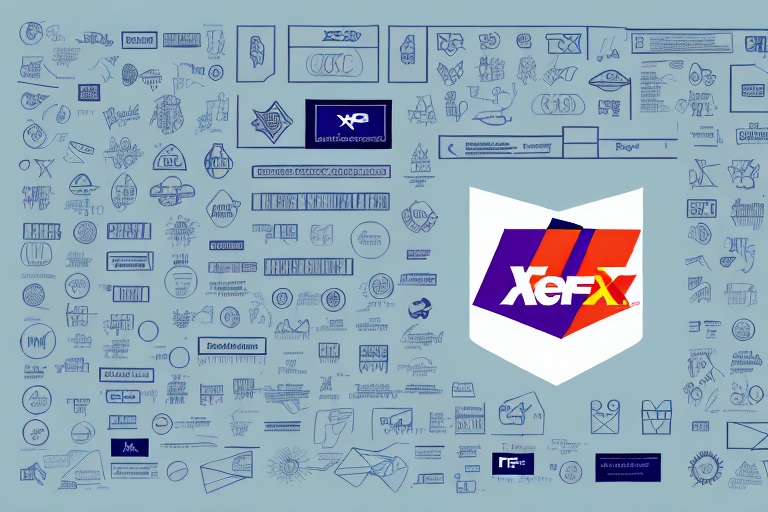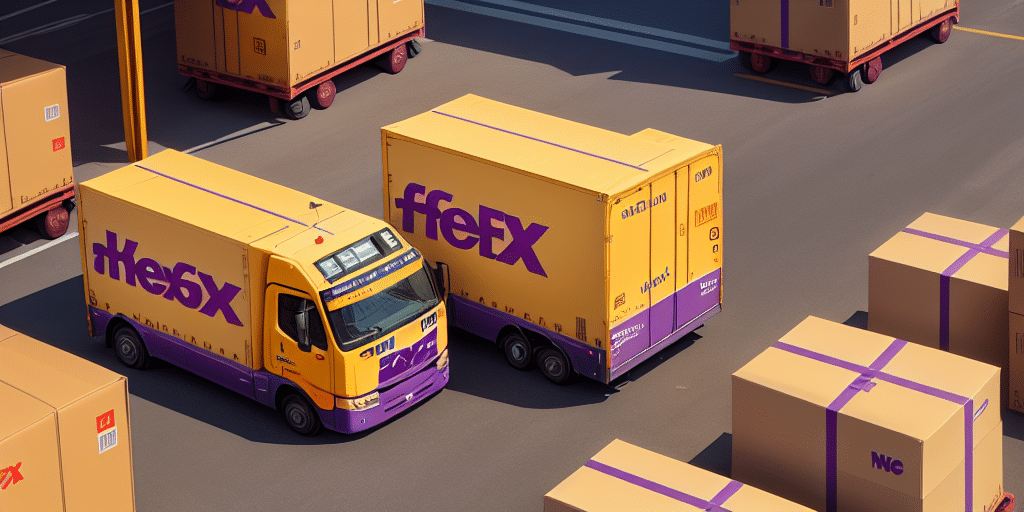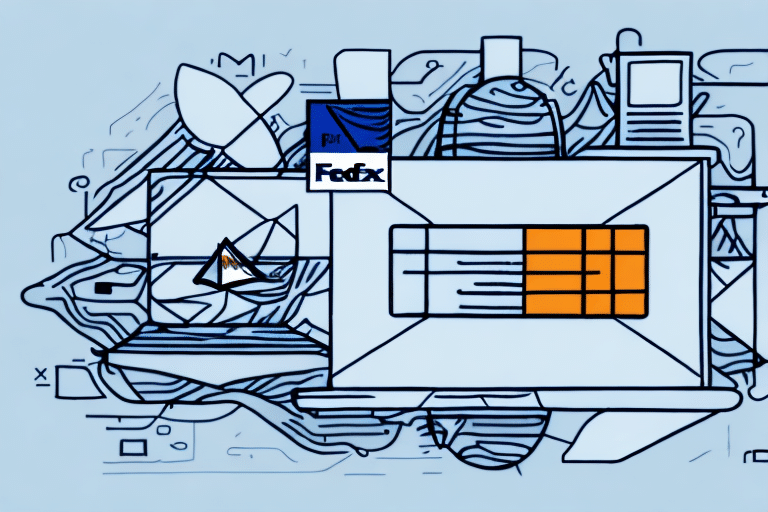Understanding FedEx Exception Codes
If you frequently ship parcels using FedEx, it's highly likely that you've encountered an exception code at some point. Exception codes are a standard and necessary part of the shipping process, used by FedEx to identify and alert customers to potential issues that could impact the delivery of their parcels. Understanding these codes is crucial for ensuring timely and accurate deliveries. In this article, we will explain what FedEx exception codes are, how they work, how to interpret them, and what to do when you encounter one.
What are FedEx Exception Codes and Why Do They Matter?
FedEx exception codes are unique identifiers assigned to a package whenever there is an unexpected event or delivery anomaly during its transportation. These events can include weather delays, incomplete addresses, customs issues, or incorrect processing at a FedEx facility. According to FedEx's latest reports, approximately 5% of shipments experience some form of exception, highlighting the importance of understanding these codes.
The main reason exception codes matter is that they provide both the sender and recipient with important information regarding the whereabouts of the package and any delivery issues. Knowing the exception code allows you to track your package accurately and take necessary steps to ensure timely delivery.
It is important to note that not all exception codes are created equal. Some codes may indicate minor issues that can be easily resolved, while others may indicate more serious problems that could result in a delay or even a lost package. It's essential to pay attention to the exception code and contact FedEx customer service if you have any concerns or questions about your package’s delivery status.
Common Causes of FedEx Exceptions
Several factors can lead to FedEx exceptions, including:
- Incomplete or Incorrect Addresses: FedEx has strict rules regarding delivery addresses, and any deviation can result in an exception code. Always ensure that the address is accurate and complete.
- Incorrect or Invalid Shipment Billing Information: Errors in billing information can prevent the shipment from being processed correctly.
- Customs Regulations and Weather Conditions: International shipments are subject to customs regulations, and severe weather can cause unexpected delays.
- Lost or Damaged Packages: Mishandling or accidents during transit can result in lost or damaged packages, necessitating additional documentation or intervention.
- Package Weight and Size Restrictions: Packages exceeding FedEx's weight and size limitations may be flagged with an exception code.
- Hazardous Materials or Restricted Items: Ensure your package does not contain any restricted items by checking FedEx’s list of prohibited items.
Types of FedEx Exception Codes
FedEx utilizes a variety of exception codes, each corresponding to specific issues encountered during the delivery process. Some common exception codes include:
- Clearance Delay: Occurs when a package is held up at customs due to issues with documentation or the contents of the package.
- Delivery Exception: Happens when there is an issue with the delivery address or if the recipient is not available to receive the package.
- Package Misrouted: Arises when a package is sent to the wrong location due to a sorting process mistake or an address label error.
- Weather Delay: Triggered by severe weather conditions that prevent the safe delivery of packages.
For a comprehensive list of FedEx exception codes, refer to the FedEx Tracking Exception Codes Guide.
How to Track Your Package Using Exception Codes
Tracking your package using exception codes is straightforward with the FedEx website or mobile app. To do this:
- Visit the FedEx Tracking Page.
- Enter your tracking number along with the unique exception code assigned to your package.
- Review the latest status of your package and any information regarding delays or issues affecting its delivery.
Additionally, you can sign up for notifications to receive updates on your package's delivery status via email, text message, or through the FedEx mobile app.
What to Do When You Encounter a FedEx Exception
If you encounter a FedEx exception while tracking your package, follow these steps to address the issue:
- Contact FedEx Customer Support: They can provide detailed information about the issue and advise you on how to resolve it. Visit the FedEx Customer Support page for contact options.
- Reach Out to the Recipient: If you are not the recipient, contact the recipient directly for additional information and assistance.
- Monitor Tracking Information: Some exceptions may resolve on their own. Regularly check the tracking status for updates or changes.
Be aware that some exceptions may require additional fees or documentation to resolve. FedEx customer support can provide the necessary information and steps to take.
Preventing FedEx Exceptions
To minimize the likelihood of encountering FedEx exceptions, consider the following best practices:
- Provide Accurate and Complete Addresses: Double-check all address details, including apartment numbers and ZIP codes, before shipping.
- Ensure Proper Documentation: For international shipments, ensure all customs documentation is complete and accurately filled out.
- Accurate Billing Information: Verify that all billing information is correct to avoid processing delays.
- Proper Packaging: Use sturdy boxes and appropriate packing materials to protect your shipment during transit.
- Clear Labeling: Clearly and accurately label your packages, including any special handling instructions or warnings.
- Avoid Restricted Items: Check FedEx’s list of prohibited items to ensure your package complies with shipping regulations.
Interpreting FedEx Exception Code Messages
FedEx provides an online reference guide listing all exception codes and their meanings. This guide can help you understand the nature of the exception code and determine the appropriate action to take.
If you’re still unsure about how to interpret an exception code message or what steps to take next, contacting FedEx customer service is recommended for personalized assistance.
The Impact of Weather on FedEx Deliveries
Inclement weather is a significant cause of FedEx exceptions. During periods of severe weather, such as hurricanes, snowstorms, or floods, FedEx may delay or suspend deliveries to ensure the safety of its employees and the integrity of packages. According to the National Weather Service, extreme weather events have been increasing in frequency and intensity, making it essential for shippers to plan accordingly.
To mitigate the impact of weather-related delays:
- Monitor weather forecasts when scheduling shipments.
- Use expedited shipping options during known adverse weather periods.
- Communicate with recipients about potential delays proactively.
Best Practices for Resolving FedEx Exceptions Quickly
To resolve FedEx exceptions efficiently:
- Act Promptly: Address exceptions as soon as they arise by contacting FedEx customer support or the package recipient for more information.
- Provide Complete Information: Ensure all necessary documentation and accurate delivery address information are provided when shipping a package.
- Follow Up Regularly: Keep in touch with FedEx and monitor tracking updates to stay informed about the status of your package.
Case Studies: Resolving FedEx Exception Codes
Examining real-life examples can provide valuable insights into how FedEx exception codes are resolved:
Case Study 1: Address Correction
A small business experienced multiple deliveries delayed due to incomplete addresses. By implementing a double-check system for address verification before shipping, they reduced exception rates by 40%.
Case Study 2: Customs Documentation
An e-commerce retailer faced clearance delays for international shipments. Collaborating with a customs broker and ensuring all documentation was accurate and complete eliminated most clearance-related exceptions.
The Future of FedEx Exception Codes: Emerging Trends and Technologies
FedEx is continually enhancing its shipping processes to reduce exceptions and improve delivery reliability. Emerging technologies such as artificial intelligence and machine learning are being leveraged to predict potential delivery issues before they occur. Additionally, advancements in real-time tracking and automated customer notifications are expected to streamline the resolution of exceptions.
According to a recent Business Insider report, FedEx plans to invest significantly in technology to minimize exceptions and enhance customer experience.
Improving Your Shipping Strategy Through Exception Code Analysis
Analyzing exception codes can provide actionable insights to enhance your shipping strategy:
- Identify Common Issues: Determine which exception codes are most frequent and address the underlying causes.
- Enhance Accuracy: Improve address verification processes and ensure all shipment details are accurate.
- Optimize Documentation: Ensure all necessary documentation, especially for international shipments, is complete and compliant with regulations.
- Train Staff: Educate your team on best practices for shipping to reduce the likelihood of exceptions.
A proactive approach to managing exception codes can lead to faster shipping times, reduced costs, and higher customer satisfaction.








